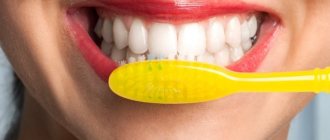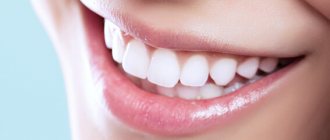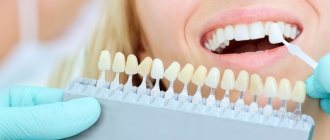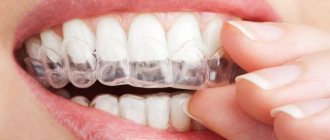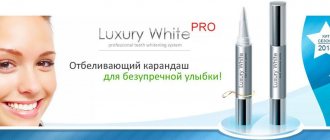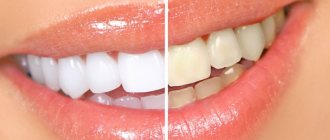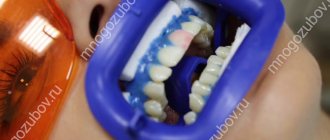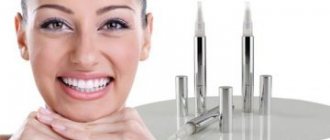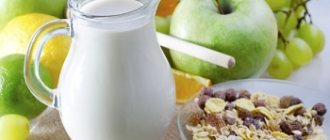The human oral cavity performs many functions, which is reflected in its condition. The mucous membrane shows systemic and pathological phenomena in the immune, endocrine and other systems, in a word, it demonstrates a general indicator of human health. Dental treatment with clay can normalize the general condition of the oral cavity, which is divided into three areas: gums, mucous membranes, and teeth.
Diseases of the oral cavity and teeth Properties of clay for dental diseases Properties of clays of various colors How to prepare healing clay Using electrolytic water in dental treatment White clay in dental treatment
An infectious disease of the tongue and mouth is stomatitis, which occurs as a result of poor hygiene or a consequence of intestinal diseases and sore throat. Stomatitis happens:
- Catarrhal – is swelling with pain and a white-yellowish coating on the tongue;
- Ulcerative - damage occurs throughout the entire area. Accompanied by dizziness, pain, malaise and swelling.
Occurs in people with intestinal or stomach ulcers or as a result of enteritis;
- Aphthous - characterized by foci of aphthae, appears due to allergies, rheumatism and imbalance in the stomach.
Viral diseases include:
- Herpes - characterized by erosive aphthae;
- Ulcerative-necrotizing stomatitis;
- Consequences of sexually transmitted diseases.
Due to yeast-like microorganisms, fungal diseases may appear, which are activated when the immune system is weakened, pathological processes, hypothermia and stress. The following types are distinguished:
- Atrophic candidiasis (acute form) – the surface of the mouth is dry and red. There may be a white coating, peeling of the epithelium, which is painful;
- Pseudomembranous candidiasis (acute form) – is expressed in drying out of the mucous membrane, coating with plaque in the form of cottage cheese. When chewing, burning and itching occurs. Untimely treatment can cause blood diseases, diabetes, hypovitaminosis, weakened immune system, etc.;
- Hyperplastic candidiasis (chronic form) - looks like a dense plaque, an attempt to eliminate it will lead to bleeding and even greater inflammation.
The mucous membrane can be affected by lichen planus (may appear on the skin). Symptoms: plaques, redness, blistering rashes, ulcers and erosion. If antibiotics are used incorrectly, dysbacteriosis may occur. The symptoms are:
- The presence of cracks in the corners of the mouth;
- Unpleasant odor;
- Loose teeth;
- The appearance of caries, periodontal disease (depletion and destruction of periodontal tissue occurs), periodontitis (a consequence of periodontal disease);
- Plaque formation, which makes the gums and enamel sensitive.
The above diseases require a competent approach and treatment; a visit to a doctor is mandatory. Treatment is mainly done with medication or with clay of different colors.
Properties of clay for dental diseases
The beneficial properties of clay depend on its color:
- Blue has antibacterial properties and works well in treating toothache and preventing caries;
- White is an excellent antiseptic, relieves irritation and inflammation in the mouth, removes itching and redness. Dental treatment with white clay is aimed at treating periodontal disease in acute and chronic forms;
- Yellow removes waste and toxins from the human body, which can cause problems in the oral cavity;
- Red will remove redness, fight infections such as stomatitis, in various forms, normalize the condition of enamel and gums;
- Green is rich in iron and magnesium, relieves swelling, removes aphthae and ulcers.
- It is used externally in the form of compresses, applications and lotions.
Tartar: how to get rid of it at home
Daily hygiene
It helps ensure that the microbial plaque that appears on the surface of the enamel will be cleaned off in a timely manner. Its growth in the future is prevented.
Without personal hygiene, there is no effective periodontal treatment. Dental plaque is the cause of the occurrence and development of diseases, the stone is formed from it.
Choosing the right toothbrush
It is recommended to use a medium-hard, multi-tuft brush with nylon bristles and rounded ends. The length of the cleaning head should not exceed 30 mm. The artificial fibers of the bristles are not saturated with moisture, which prevents the formation of a bacterial environment on the brush itself.
It is important not to forget to change the brush at least once every 3-4 months.
- Electric toothbrush: benefits and harms
There are special brushes that provide the opportunity to remove tartar at home. These are electric gadgets with a built-in generator that deal with tartar in easily accessible areas.
There are also electric brushes with a rotating head that are effective at removing plaque and tartar from areas where a regular brush cannot reach.
Use special pastes for prevention
- The composition should contain pyrophosphates and zinc compounds. This will reduce the deposition of tartar on the surface of the teeth and inhibit the development of bacteria.
- Abrasive and grinding components in the composition are another way to remove tartar at home. Plant enzymes in the composition - bromelain and papin - soften hard formations, which makes them easier to remove.
- Any medicinal pastes should be used in courses. When used twice a day for two weeks, a break must also be taken for two weeks. The RDA (abrasiveness) index should not be lower than 120. You can use a powder that will help clean soft plaque more efficiently.
- It is recommended to use two different pastes, alternating calcium-containing paste and whitening paste with fluoride. It is important to remember that the content of fluorine and fluorides in it should not exceed 0.1-0.6%.
How to prepare healing clay - recipes
- Heat the clay to 40-50 degrees, then knead it until it looks like a cake and apply it to the sore tooth or gum. At the same time, you need to apply a compress to your cheek, the product should be warm.
- If your gums are bleeding, you should take a soft cloth with liquid clay previously applied to it and brush your teeth. As a result, bleeding and yellow plaque will disappear, and the teeth will become snow-white.
- The tongue, as a rule, does not require special treatment and care. But in case of acute pain, you need to act by using this substance. To do this, rinse your mouth with water containing red or blue clay.
- If there are ulcers, swelling and burns on the tongue, you need to apply a thick layer of clay of any color. It is advisable to keep this cake for a longer time, then spit it out and apply it again. The procedure must be repeated several times daily.
- It can be used with essential oils such as tea tree, orange or peppermint. Pour water over the clay, add 3-4 drops of the selected oil, and rinse your mouth with this decoction. Pay special attention to diseased areas.
Methods of application using “dead” (electrolytic) water on teeth + clay
You can cure a toothache without a dentist. Clay itself is a natural adsorbent with a powerful effect. Experts recommend using dead water, which has a disinfecting effect.
Dead water can be obtained using silvering agents or you can create a device yourself. Today such water is in the public domain.
Three magical components can be distinguished: clay, salt and dead water. These substances are aimed at the prevention and treatment of the most acute forms of periodontitis. To prepare a compress you will need dead water and white clay. Dissolve the substance in the liquid and fill your mouth with the resulting solution, rinse your mouth for 5 minutes. Also, dead water interacts well with salt, preferably sea salt; rinse your mouth morning and evening every day.
Tooth powder recipe for health and ecology
Many dentists will tell you that you can use tooth powder no more than a few times a week, but strictly not more often due to its aggressiveness to tooth enamel. They are especially worried about soda, noting its super-high abrasiveness. There are usually no complaints about effectiveness; on the contrary, its high level is noted.
Let's figure out then what abrasiveness is and why it is needed.
The movements that we make with a brush are capable of destroying tartar, but are not able to remove the film from bacterial colonies and clean the teeth well, no matter how much effort is applied. Abrasive particles increase friction and destroy the film, removing it from the surface. That is, this is a necessary property for cleaning teeth from plaque.
However, along with this, abrasiveness has an abrasive property, that is, it can destroy our enamel (which is what scares us from everywhere).
All toothpastes have some type of abrasiveness, and the hardness of your toothbrush also plays a role here.
How abrasive the particles of a particular paste are can be determined using the RDA - abrasiveness index. This way we can evaluate how well the paste will cope with plaque and how safe it will be for our enamel. There are meanings for many well-known brands, you can search the Internet, I will attach below the list that I found.
The list ranges from 0 to 250 and is divided into 4 sections (from low abrasiveness to high abrasiveness - harmful to your teeth).
The safe and effective value of toothpaste abrasiveness recommended by experts is in the range of 0-70 (blue section). Preferably in combination with a soft / or very soft toothbrush and gentle but thorough movements.
So, there are 2 points here.
Their first point is simply cleaning with a brush and water, abrasiveness index: 4. The second point is regular baking soda: index 7. Accordingly, it is completely safe.
Next we see different manufacturers, including popular ones on our store shelves.
And here is the second interesting point. As we have already noted, absolutely all pastes contain an abrasive. Check the composition of yours. I found “Sodium Bicarbonate” - baking soda - at Colgate and at Splat. How do you like it?) Instead of and together with soda, sometimes an equally abrasive substance “Calcium Carbonate” or simply chalk or marble can be used. You will also find hydroxide or dioxide of silicon or titanium (like Levrana, for example) - the same crystals, the same abrasive.
All these minerals, as individual substances, including white clay (kaolin) in the Classification of Rocks by Abrasiveness (according to L.I. Baron and A.V. Kuznetsov) have values from 0 to 7 and are low-abrasive.
However, the RDA scale varies from manufacturer to manufacturer. Perhaps the fact is that in addition to soda or the abrasives listed above, pastes also use other substances that enhance the abrasive effect.
In any case, we can see that regular baking soda has a much lower abrasiveness than the same regular Colgate Sensitive paste (with a value of 63) or the vaunted Weleda with a minimum abrasion index of 15.
You can also conduct an experiment yourself: rub toothpowder (according to our recipe) and your toothpaste on the shiny side of the foil with a toothbrush. Here's an example of how to do it. As a result, where a more noticeable rubbed stain is formed, there is a greater abrasive effect. We have already conducted such an experiment, and our old Colgate erased the shiny layer noticeably more.
So, the question is: why can soda and tooth powder be used only a few times a week, and toothpastes - constantly, if they are more aggressive for enamel (and at the same time contain the same soda and other minerals)?
Right here facepalm

